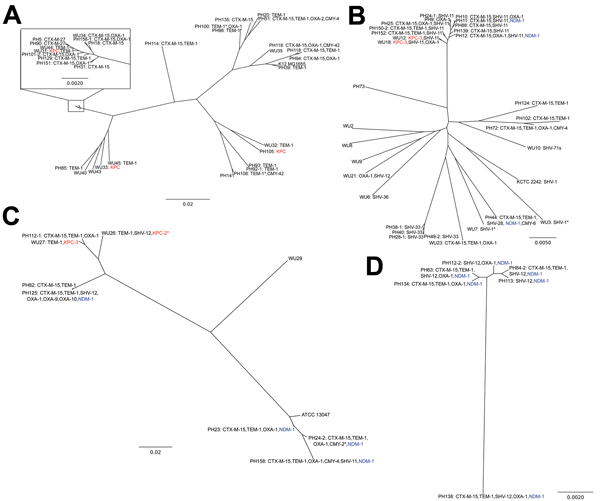Volume 21, Number 6—June 2015
Dispatch
KPC and NDM-1 Genes in Related Enterobacteriaceae Strains and Plasmids from Pakistan and the United States
Figure 1

Figure 1. Distribution of antimicrobial drug resistance genotypes of KPC and NDM-1 genes in related Enterobacteriaceae strains and plasmids in Pakistan and the United States. Phylogenetic trees have been annotated with the specific β-lactamases encoded by those isolates. Klebsiella pneumoniae carbapenemase carriage is indicated by bold text, and New Delhi metallo-β-lactamase-1 carriage is indicated by bold, underlined text. A) Escherichia coli; B) Klebsiella pneumoniae; C) Enterobacter cloacae; D) Enterobacter aerogenes. *Denotes an unnamed single nucleotide variant of the named β-lactamase. Scale bars indicate nucleotide substitutions per site.
1These first authors contributed equally to this article.
Page created: May 15, 2015
Page updated: May 15, 2015
Page reviewed: May 15, 2015
The conclusions, findings, and opinions expressed by authors contributing to this journal do not necessarily reflect the official position of the U.S. Department of Health and Human Services, the Public Health Service, the Centers for Disease Control and Prevention, or the authors' affiliated institutions. Use of trade names is for identification only and does not imply endorsement by any of the groups named above.